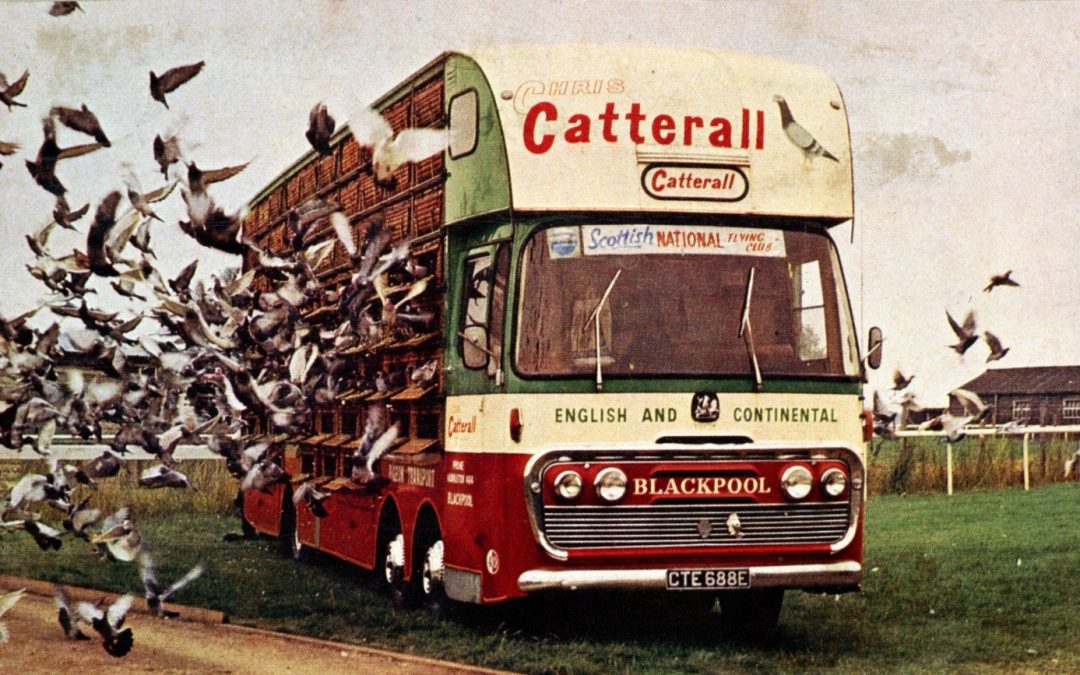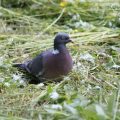Table of Contents
Pigeons are a group of birds that can quickly adapt and thrive in various types of habitats whether in the wild or as captive birds inside pigeon lofts. The pigeons in the United States that are commonly seen in cities are classified as feral rock doves; these are breed of birds that were brought to the U.S. from Europe around the 1600s. Feral rock doves are also known as rock pigeons, and these birds make their ‘own’ version of pigeon lofts in varied habitats throughout the world. These birds have learned to adapt to human life which is why many breeders over the years go out of their way to build the best pigeon lofts.
Before we proceed on discussing how to set – up the best lofts for your pigeons it’s essential to learn how they thrive in various habitat set – ups both in urban/ rural places and in the wild.
Urban Landscapes
Pigeons can successfully thrive and adapt in urban settings because of the many buildings found in most cities. These birds can comfortably live in a set – up that simulate their habitat in the wild; window ledges and towering buildings located in urban areas looks a lot like cliffs and mountains for these birds, which is why they use such man – made spots to build their own pigeon lofts where they can nest, loaf and roost. They usually get their food by scavenging through trash, or through food dishes that are left outside by people. Some pigeons also survive by picking up pieces of scrap food as they go. It’s also quite common for people to offer bird food like seeds and bread crumbs to city pigeons.
Rural and Suburban Areas
Pigeons also thrive in rural and suburban areas. If these birds inhabit cliffs and caves in the wild, and learn to adapt using window ledges and buildings in urban cities; rural pigeons find lofts in abandoned homes, open barns, and under the bridge as well as other human structures available. They usually eat garden waste, grains that are spilled around, animal food, and other edible things around. Some pigeons make trouble for themselves because they feed around grain storages and farms which of course is not good for the farmers.
Rocky Cliffs
The natural habitat of pigeons is big and rocky cliffs. These birds typically build their nests around the crevices of the cliffs making it quite a challenge for potential predators. Some of them also live in cave openings and other similar natural structures. They feed on grains, fruits, and seeds as well as small lizards, snails, insects, slugs and the likes. Both parents take turns in incubating the eggs, and it’s quite common for these birds to return to the same nest every year; they just make a new nest on top of the old one.
Other Pigeon Habitats
Pigeons are pretty flexible when it comes to their habitat. They can successfully adapt to natural surroundings whether it may be in a rainforest, swamp forest, arboreal or in deciduous forests. They can also survive the extreme conditions of deserts by eating succulent plants; live on deserted islands, in chaparral, in mangrove forests and almost every type of environment except in the Antarctic and Artic regions. Many pigeons live together in a particular place if the area has a favorable condition and food is not scarce.
Since pigeons are flexible, many breeders all over the world kept them for different reasons. Some breeders train their pets to become homing pigeons (trained to fly home even from a long distance, and are trained to carry messages back in the day); some owners used these birds for racing purposes while many just want to keep them as pets. Regardless of the owner’s purpose, the common denominator is that there’s a need for a shelter to keep these beautiful birds safe and secure. This type of shelter is known as a pigeon loft.
What is a Pigeon Loft?
Pigeon lofts are a raised type of building or structure where pigeons are usually kept. Many of these structures are built at ground level wherein the legs are up several feet off the ground; in order to make it secure from predators. Some breeders build a loft for their pigeons using upper stories of their garage. Keeping pigeons are becoming more and more popular especially among city dwellers; as they can easily set – up one on top of their apartment buildings. It’s also popular for birders or so – called pigeon fanciers who race their pigeons and breed them.
Setting – Up Pigeon Lofts
One of the most important things to consider when building a pigeon loft is its size. If the quarters are cramped, your pigeons would likely engage into a fight and can definitely lead to injuries. Cramped quarters also contribute to the transmission of diseases between the birds. Your pigeons should have enough space to feel comfortable; a breeding pair requires around 2 to 3 cubic feet.
Another factor to consider is the placement or location of the pigeon loft. It’s not advisable to place lofts near wires or perching places as they will get distracted; if you want to keep them for training purposes. The best place to set – up the loft for your pigeons are in an elevated area free from barriers.
It’s highly recommended that the floor is made out of wood; though this material can be difficult to clean and maintain. Concrete floor is easier to maintain but it usually keeps the cold which your pigeons will not like; this is why wood is often preferred by breeders. Pigeon hobbyists sometimes use screen floors to make it easier for them to clean but it could be hard for the bird’s feet.
The size of the pigeon loft depends on the number of birds you plan to keep as well as the space you have and your budget.
Key Features of a Pigeon Loft
The roof of the loft should overhang the walls in order to prevent the rain; from pouring inside the bird’s shelter. Pigeons like to be enclosed by 4 walls, which is why the loft needs to have good ventilation. You must keep the loft clean, and don’t forget to change the water and food bowls on a daily basis.
The loft should also face in the direction of the best weather depending on; the kind of climate you have in your location. The wood floor should also be raised on concrete blocks because if it’s placed on the ground; rodents and small animals can live underneath which can cause problems for your birds. Some owners set – up multiple compartments to prevent male and female pigeons from breeding.
Pigeon lofts should also have landing boards where the bird can easily re – enter their enclosure. You can set – up trap doors so that you can easily close it once your pet comes inside. Most lofts can be fitted with screen aviary; so that they can enjoy the sunshine and fresh air whenever they like. You should also set up perches and nest boxes inside the loft.
How to Build Your Own Pigeon Loft
Many styles of pigeon lofts range from simple structures to elaborate enclosures that can almost cost as much as a real house. You can find lots of pigeon loft styles/ designs if you want a DIY (do – it – yourself) building. It can be a cost – efficient experience for any pigeon hobbyist. As mentioned earlier; the location of the loft is very important so that there would be no obstructions that can hinder your pigeon from returning to its enclosure. It’s also essential to provide a bathing area that’s large enough to accommodate all your pigeons inside the aviary. Here are the important factors to consider when building a pigeon loft:
- Ventilation
- Easy to clean
- Availability of sunlight
- Enough space for your pigeons
- Security from predators
Plywood is what most pigeon breeders use to construct roof and walls since it is durable; and also cheaper compared to other materials. You also need to buy a screen and wood to build the frame of the loft. Make sure to keep the interior dry to make it a sanitary environment for your flock; you can also opt to use a litter system to ensure that the area is clean.
Pigeon Loft Kits
Pigeon loft kits are also available to get you started in building your pigeons’ loft. The kits provide ready – made materials so that you won’t miss out on anything. If you don’t have time to create a DIY loft; you can purchase a fully – constructed loft and just have it delivered to you though it will cost more. Fully set – up pigeon lofts usually range from hundreds to thousands of dollars. Some breeders and pigeon fanciers invest in complex designs because it provides breeding quarters, and has partitions.
Regardless of how you create your pigeon loft; the most important thing is to ensure that the loft is clean and comfortable for your bird. Proper husbandry practices must be implemented to keep your pigeons healthy and maintain the structure of the loft. Depending on the litter system or flooring you choose; it’s your duty to clean the enclosure on a daily basis or at least every week. You also need to periodically inspect the screens and roof of the loft to ensure that water; and other predators cannot enter inside.






 Author and long-time animal lover. Sharing knowledge on pet care through experience and the written word.
Author and long-time animal lover. Sharing knowledge on pet care through experience and the written word.